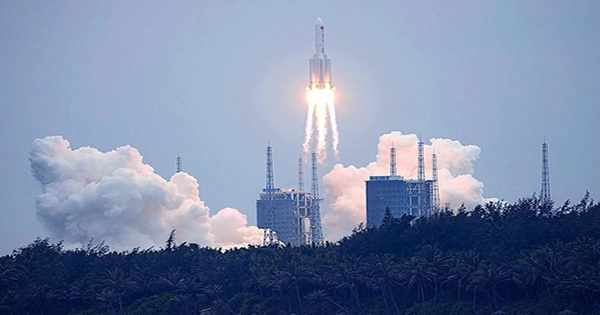During their search for the remains of a World War II-era aircraft, a TV documentary crew came across an artifact from the Challenger space shuttle, which in 1986 crashed and killed all seven astronauts on board, including a teacher.
On the seafloor, divers came upon a sizable “human-made” object that was partially buried by sand.
The documentary team contacted NASA, which validated the discovery, as a result of the object’s proximity to the Florida Space Coast in the US, its recent design, and the presence of 8-inch square tiles.
Although it has been over 37 years since seven courageous and adventurous explorers perished onboard Challenger, this tragedy will live on in the collective memory of our nation.
According to NASA Administrator Bill Nelson, January 28, 1986, still seems like yesterday for many people throughout the world, including myself.

According to a statement he released, “This discovery provides us an opportunity to pause once again, to uplift the legacies of the seven pioneers we lost, and to reflect on how this tragedy transformed us.”
On November 22, the History Channel will run the documentary describing the most recent Challenger find.
Francis R. “Dick” Scobee piloted and Francis R. “Dick” Scobee oversaw the final Challenger mission, STS-51L.
Other crew members included payload specialist Gregory B. Jarvis, instructor S. Christa McAuliffe, and mission specialists Ronald E. McNair, Ellison S. Onizuka, and Judith A. Resnik.
The Challenger spacecraft and the seven astronauts on board were lost 73 seconds after launch due to a serious malfunction.
Unexpectedly chilly temperatures had a negative impact on the O-ring seals’ integrity in the solid rocket booster segment joints, according to a later agency investigation.
NASA’s safety culture was significantly impacted by the loss of Challenger and later Columbia with its seven astronauts (including Indian-origin Kalpana Chawla), which broke up on re-entry in February 2003 over the western US.
NASA built a space where anybody may voice their safety concerns, devised new risk assessment protocols, and formed an Office of Safety and Mission Assurance.
In order to communicate these experiences both internally and with other government, public, commercial, and international audiences, the agency also established the Apollo Challenger Columbia Lessons Learned Programme.
According to Kennedy Space Center Director Janet Petro, “Challenger and her crew live on in the hearts and memories of both NASA and the nation.”
In order to properly honor the legacy of the astronauts who died aboard Challenger and the families who loved them, NASA is currently thinking about what additional steps it could take in relation to the artifact.
















